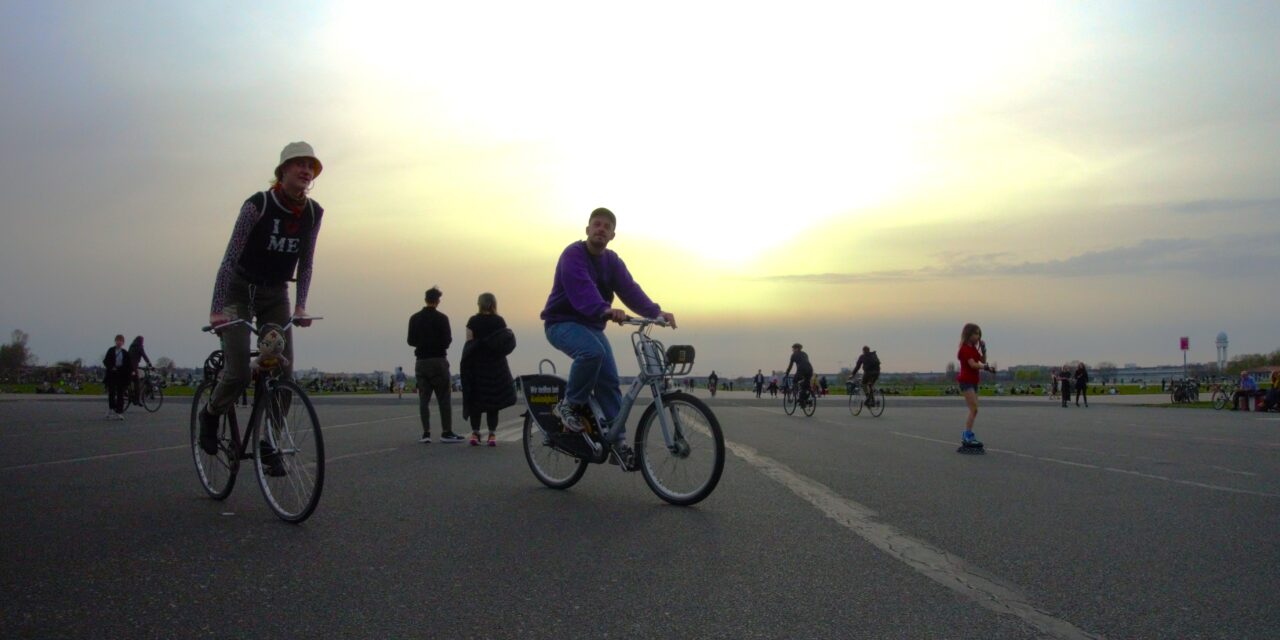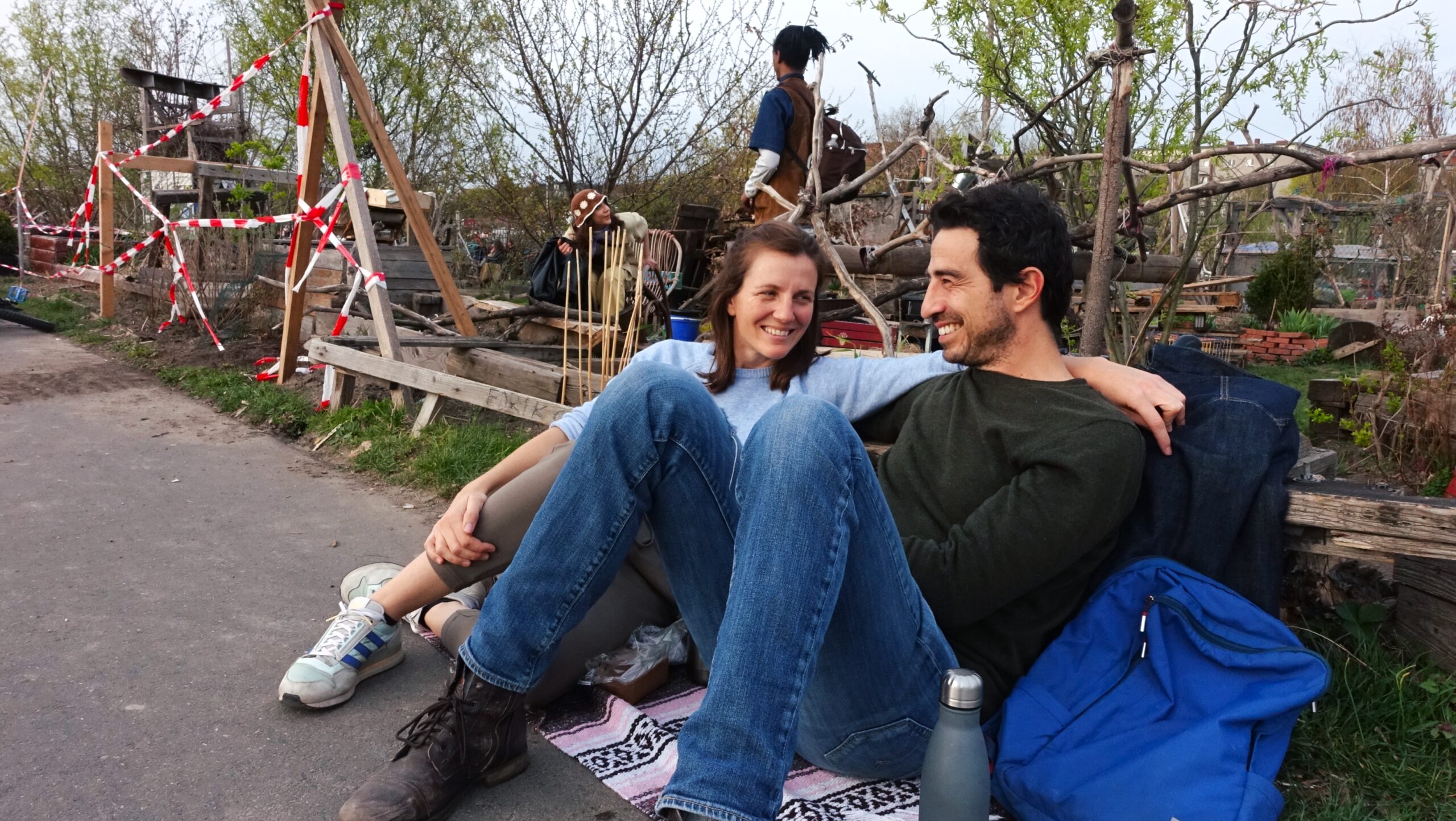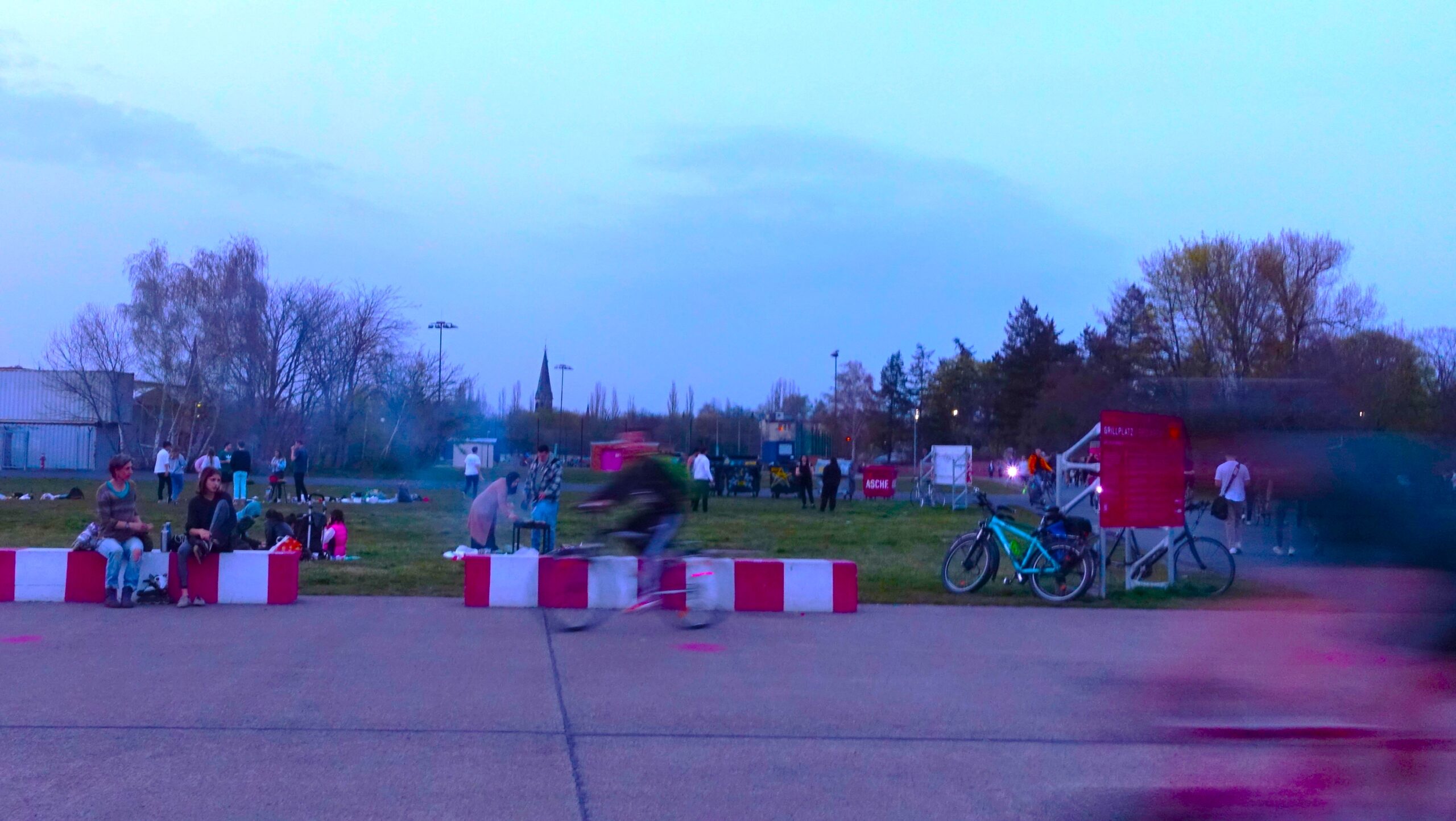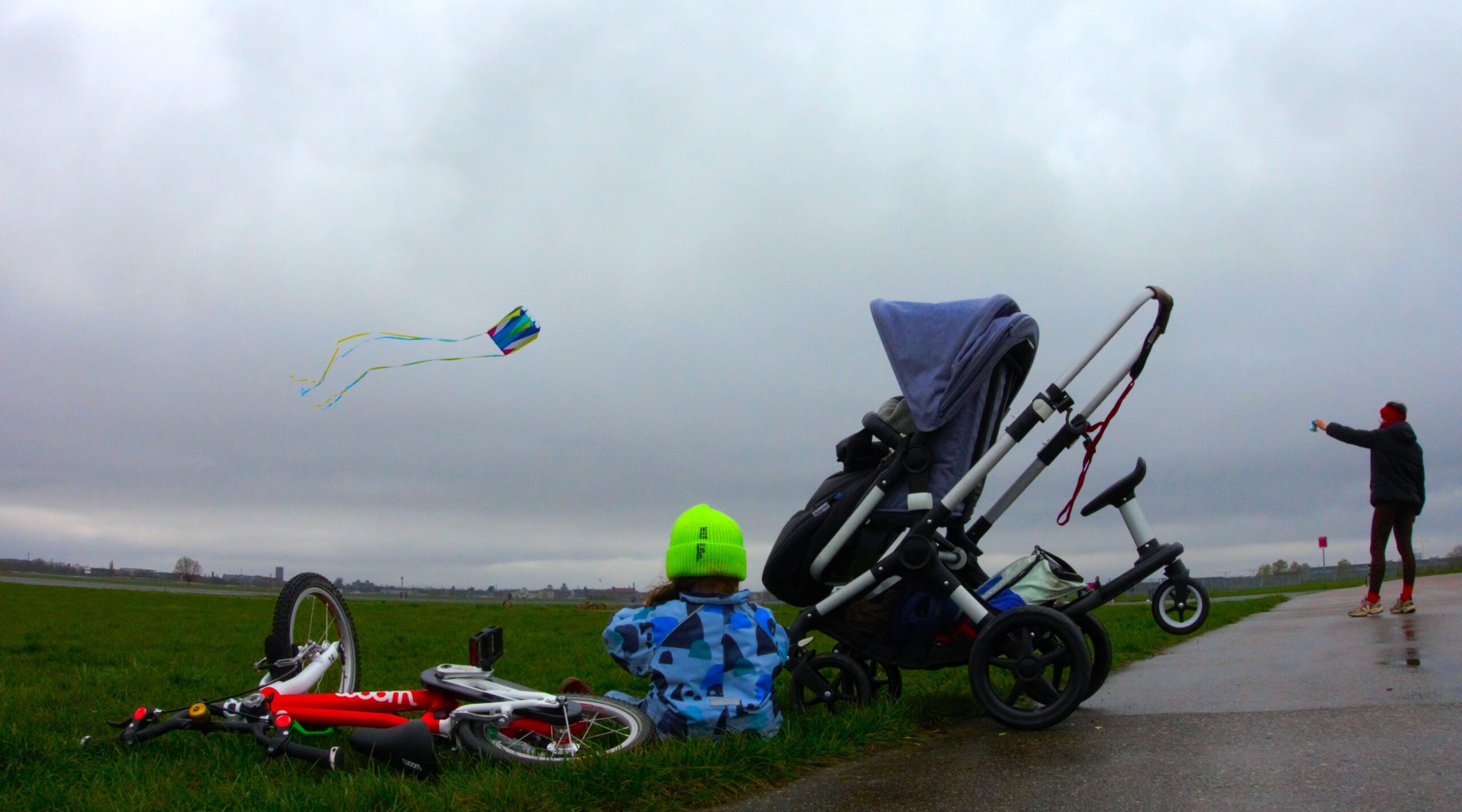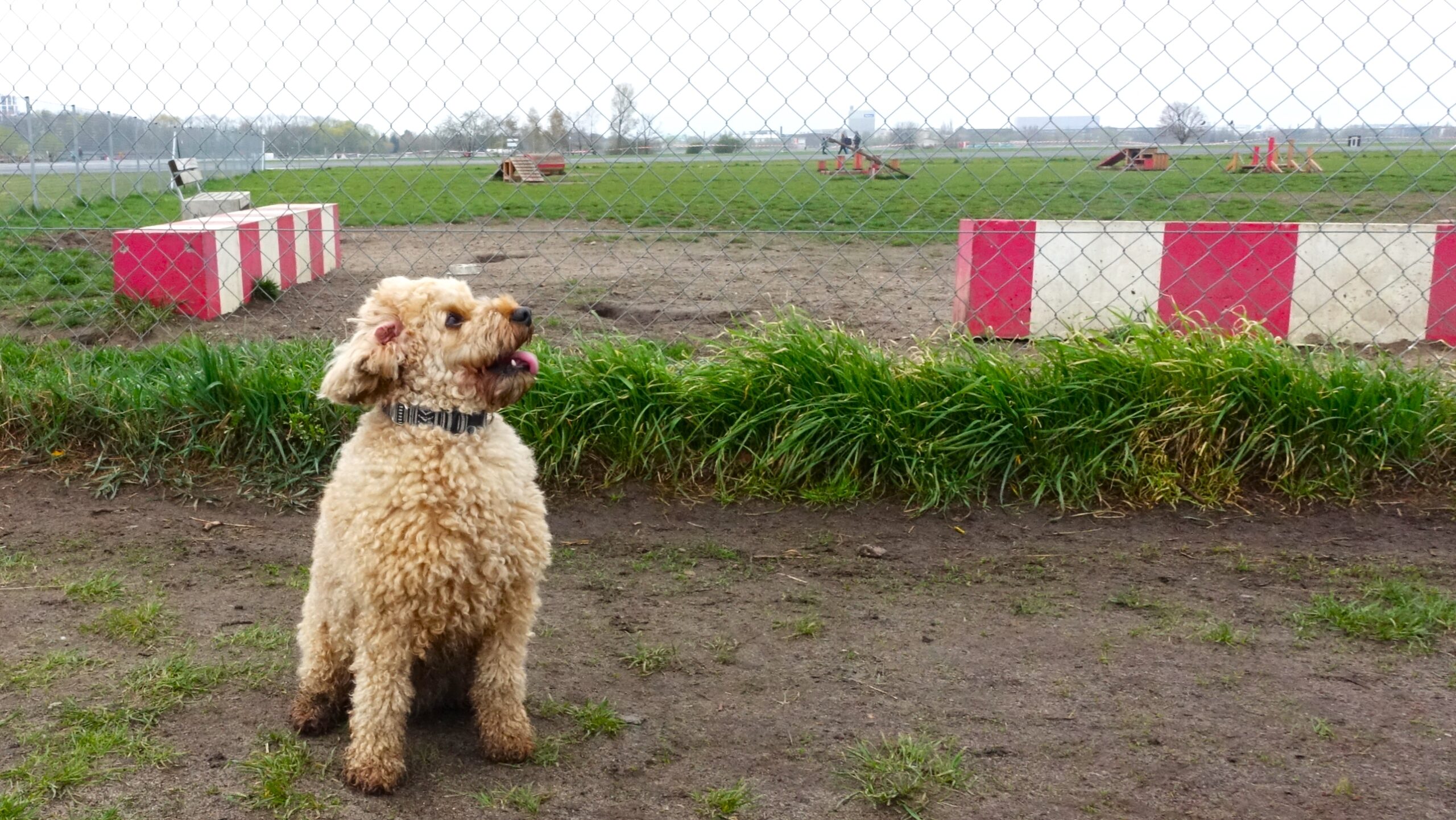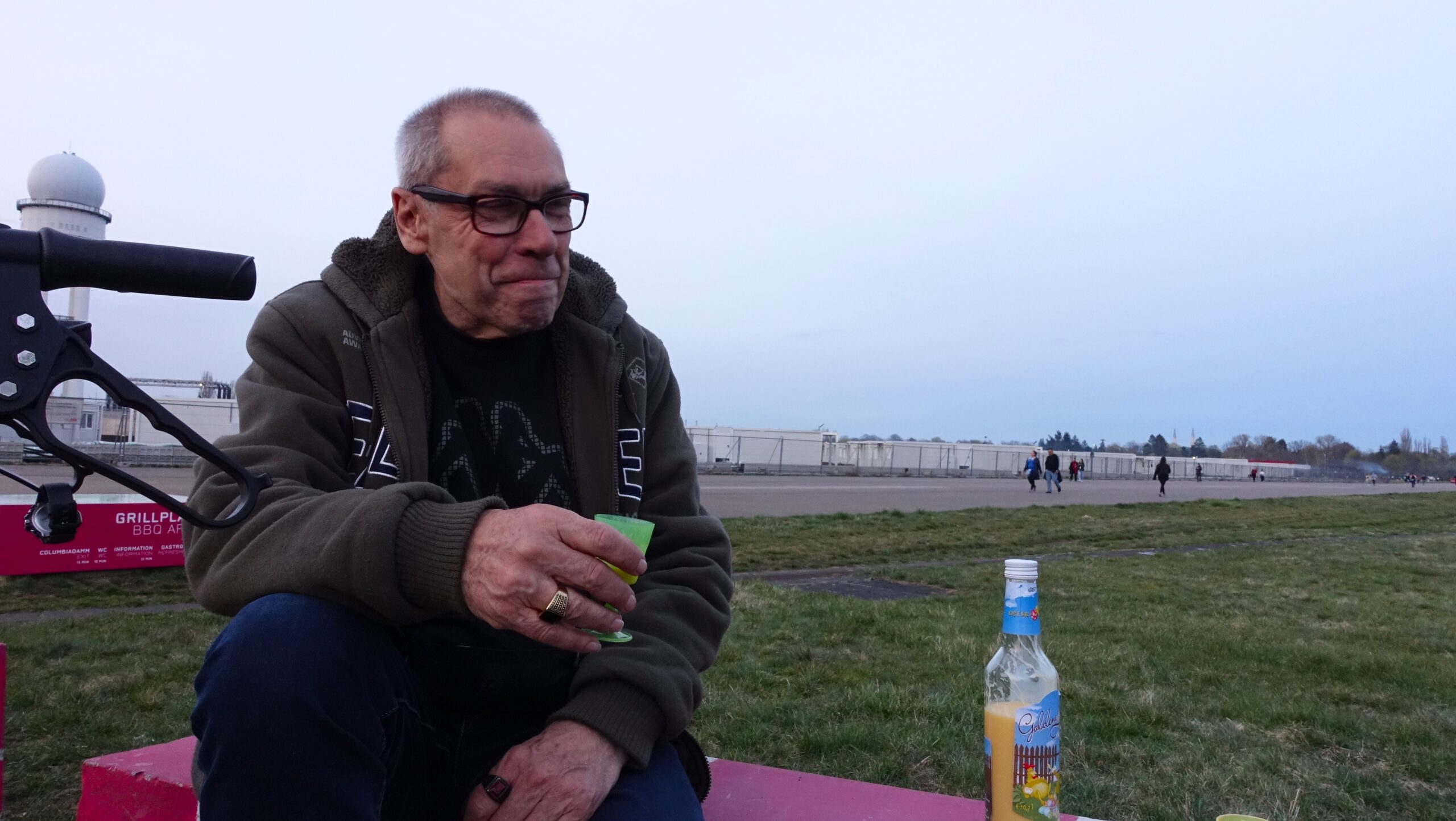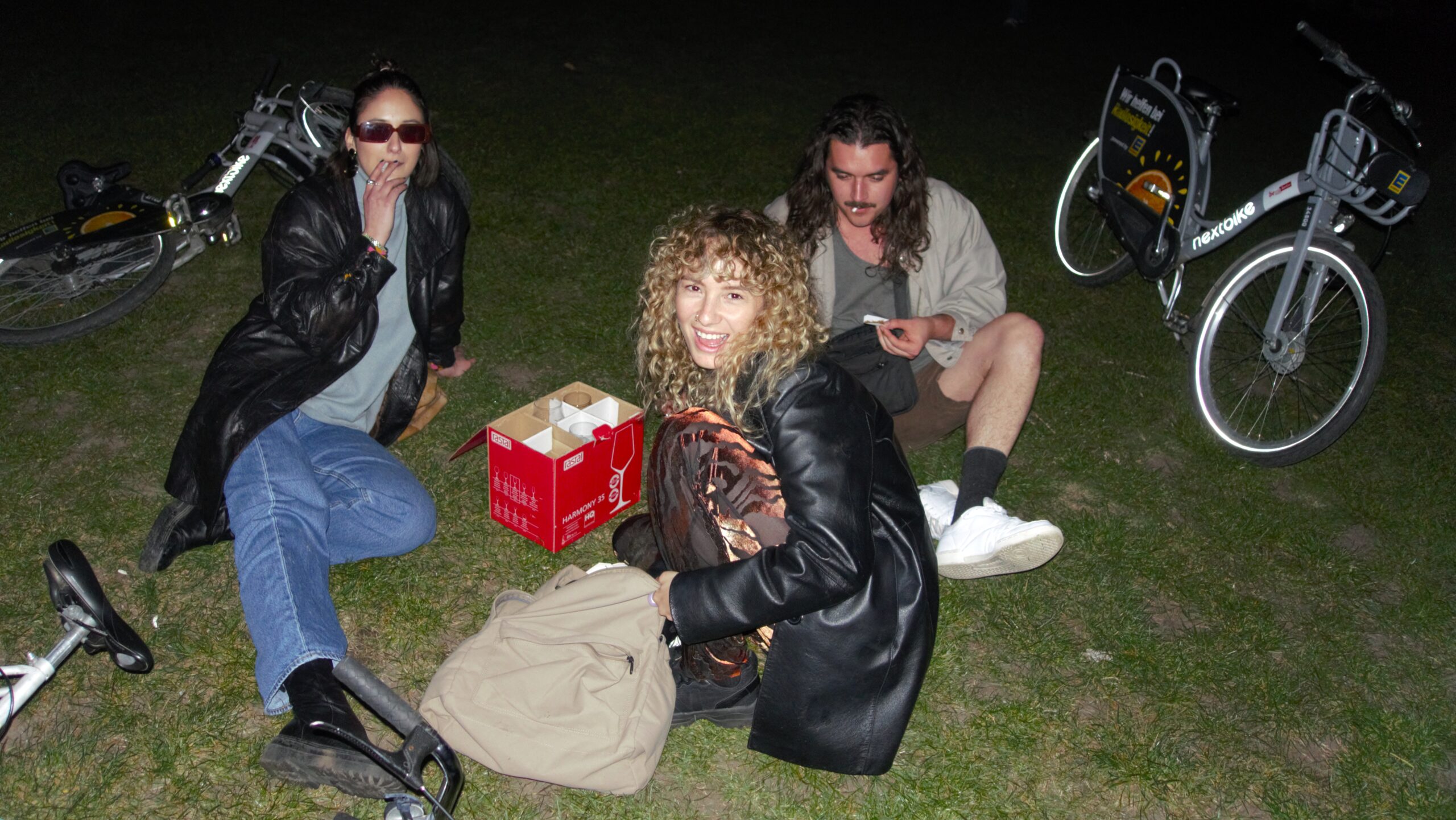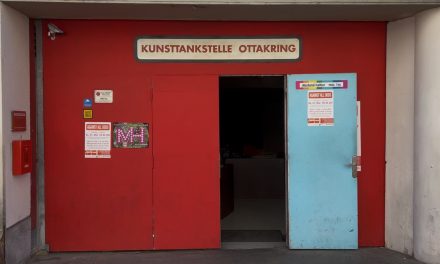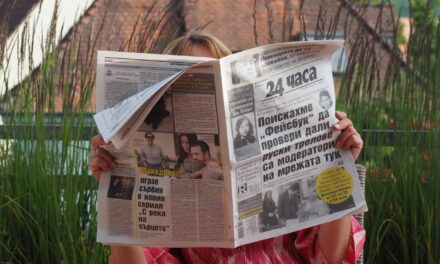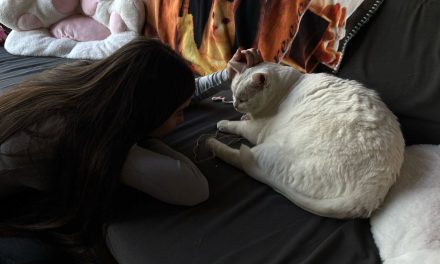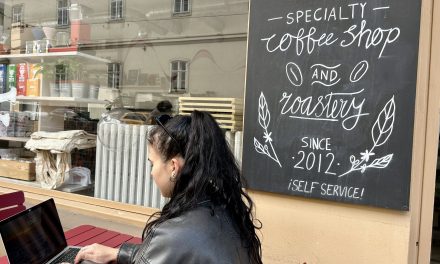A big green field full of different people. The Tempelhofer feld, situated in the districts of Neukölln and Tempelhof, is over 355 hectares.
During this almost sunny Wednesday day in April Berliners from all over the city have gathered in the former airport field. Some are meeting with friends, having a picnic, and drinking a couple of beers. Other have come to do sports of some kind. On the asphalted street, once a taxiway, a man is doing a handstand while children and parents are roller skating. A group of break dancers are practising new moves. The field is a meeting spot for Berliners. Here you can picnic, fly a kite, roller skate, bike, dance, do sports, birdwatch, or grill. Next to the street sit Petra and Daniel. They’ve come here to relax after their workday.
“I come here maybe once a week. I love to just sit here with people. The atmosphere and the diversity are very special here” Petra tells me.
Walking away from the more crowded area near the south entrance I find the official grilling spot. Next to it a football team is practising. On a bench sit the two friends Anna and Lena. They live nearby and usually meet up at the park.
“This place has been with me my whole life. I used to fly from here as a child and later I’ve been here a lot when it opened as a park.” Anna says.
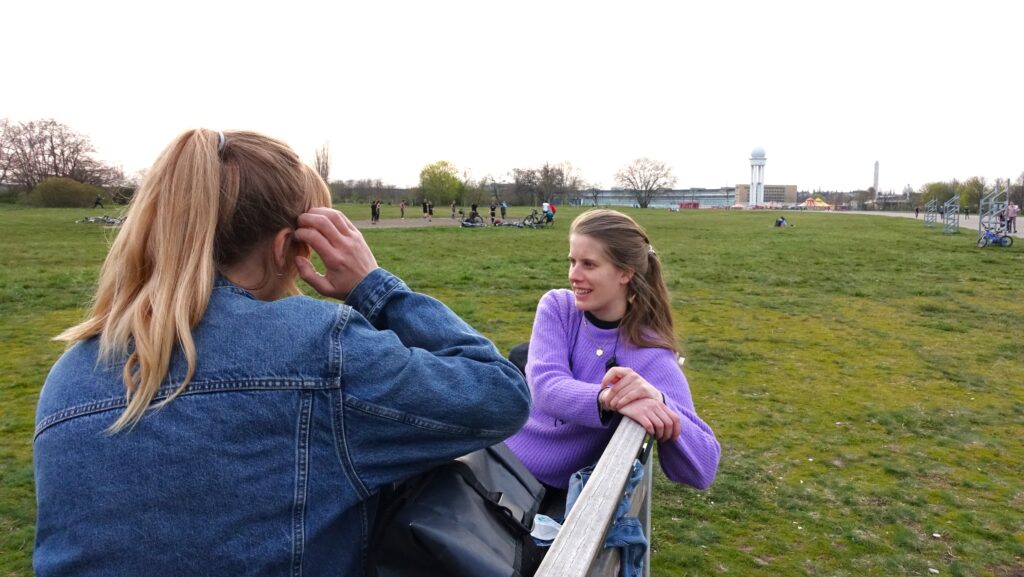
The former airport has a history of over a hundred years. After it’s closedown in 2008 it opened in 2010 as a park, later renamed as Tempelhofer feld or Tempelhof field. During the second World War it was used as a concentration camp for political refugees. During the Berlin blockade supply aircraft landed at the airport. In 2014 planning started to turn parts of the former airport into housing, but Berliners didn’t like that. A referendum was held and around 64 percent of people wanted to keep the park as it is. After this the law of preservation of Tempelhofer Feld came into force. It protects the field keeping the central area untouched while in the outer meadow’s development can be made.
A new study by opinion research institute YouGov makes it clear that Berliners are now, eight years later, more open to partly doing something with the field. In the representative survey a clear majority spoke out in favour of partial development of Tempelhofer Feld.
For Berliner Philip it doesn’t really matter, but he would be open to development.
“I could see more recreational stuff for children here. And of course, the people living near the field don’t want apartments to be built, but it’s so big it might not hurt to make parts of it into housing as it is really needed in Berlin.”
Philip is in the field with his family to fly kites.
“We live in Mitte so it’s quite far away. We usually come here maybe once a month with the children” Philip tells me, while he tries to unwind the kite. His son runs around with a small airplane.
Not only humans gather in the park; there are also several dog parks where dogs of all sizes play together. Out of one of the parks comes Mitzi with her owner. Mitzi seems excited to have played with her friends. What does Mitzi think of the Tempelhofer feld?
“Wau wau wuff wuff” Mitzi answers and jumps on my white shoes. She seems to like the field.
Where during the evening people gather to drink and talk people garden in the mornings. The Community Garden Schillerkiez is popular for both visitors and actual garden enthusiasts. One of them is Jessie.
“I’m from the countryside originally and moved to Berlin during corona and really missed having my own garden, so I really love having my own little garden again.” Jessie tells with a smile. She has been lucky to get her own plot of land at the garden. Jessie and her friend Sue have come to plant herbs and salad.
“I’m just helping.” Sue says.
“You can’t really plant anything very fancy like a pumpkin or… a melon. There are so many people that come here, so it’s not worth it.” says Jessie.
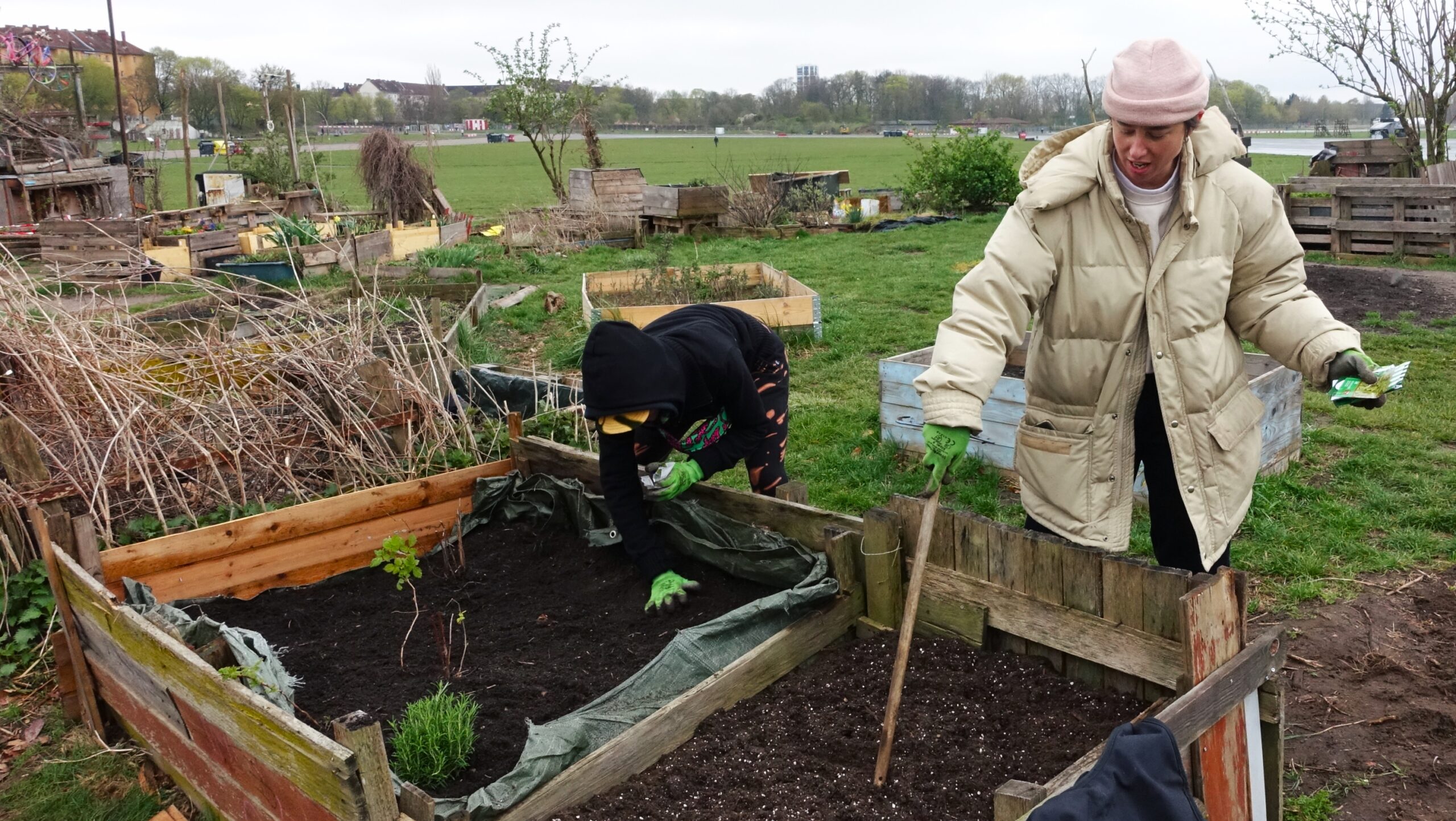
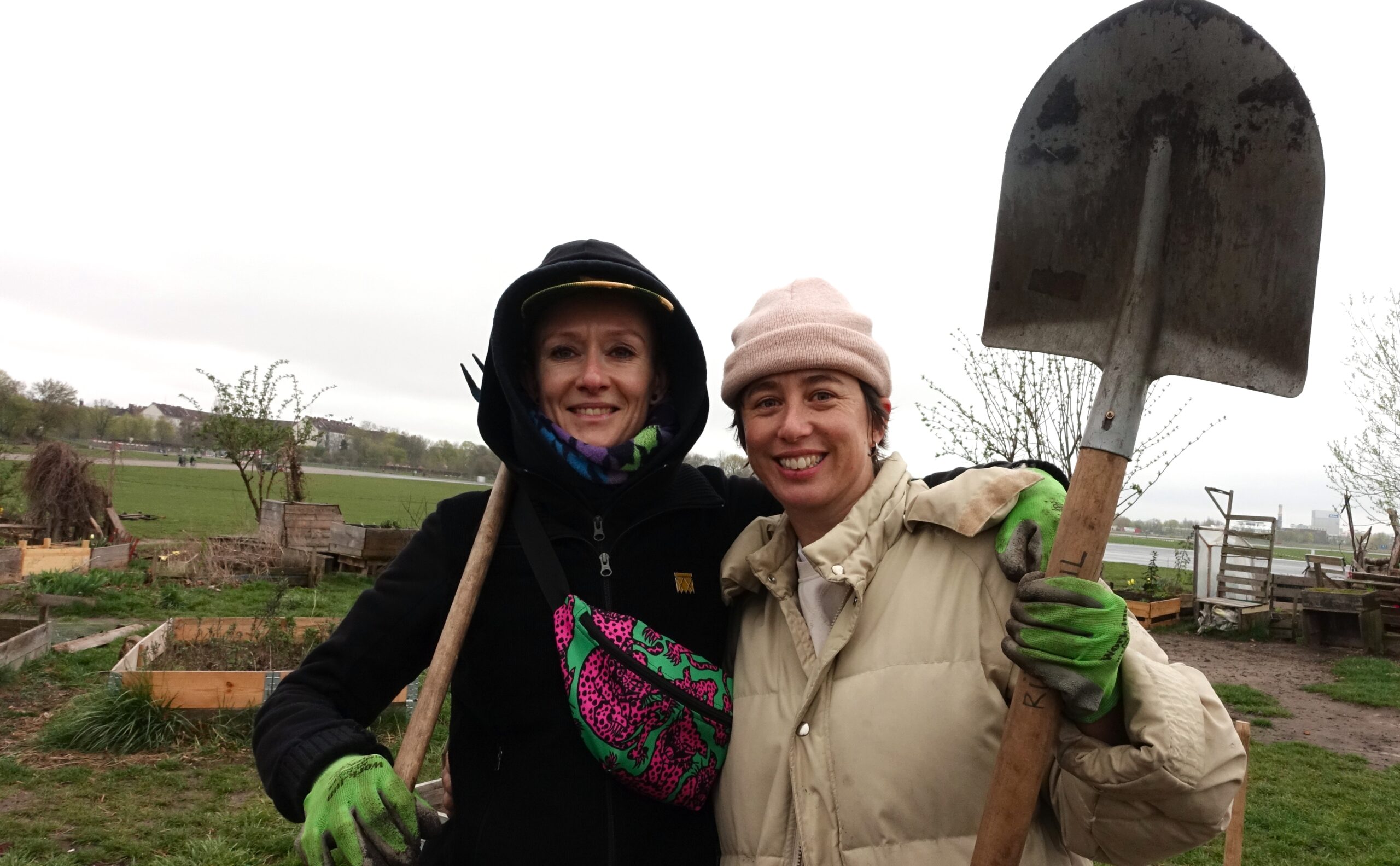
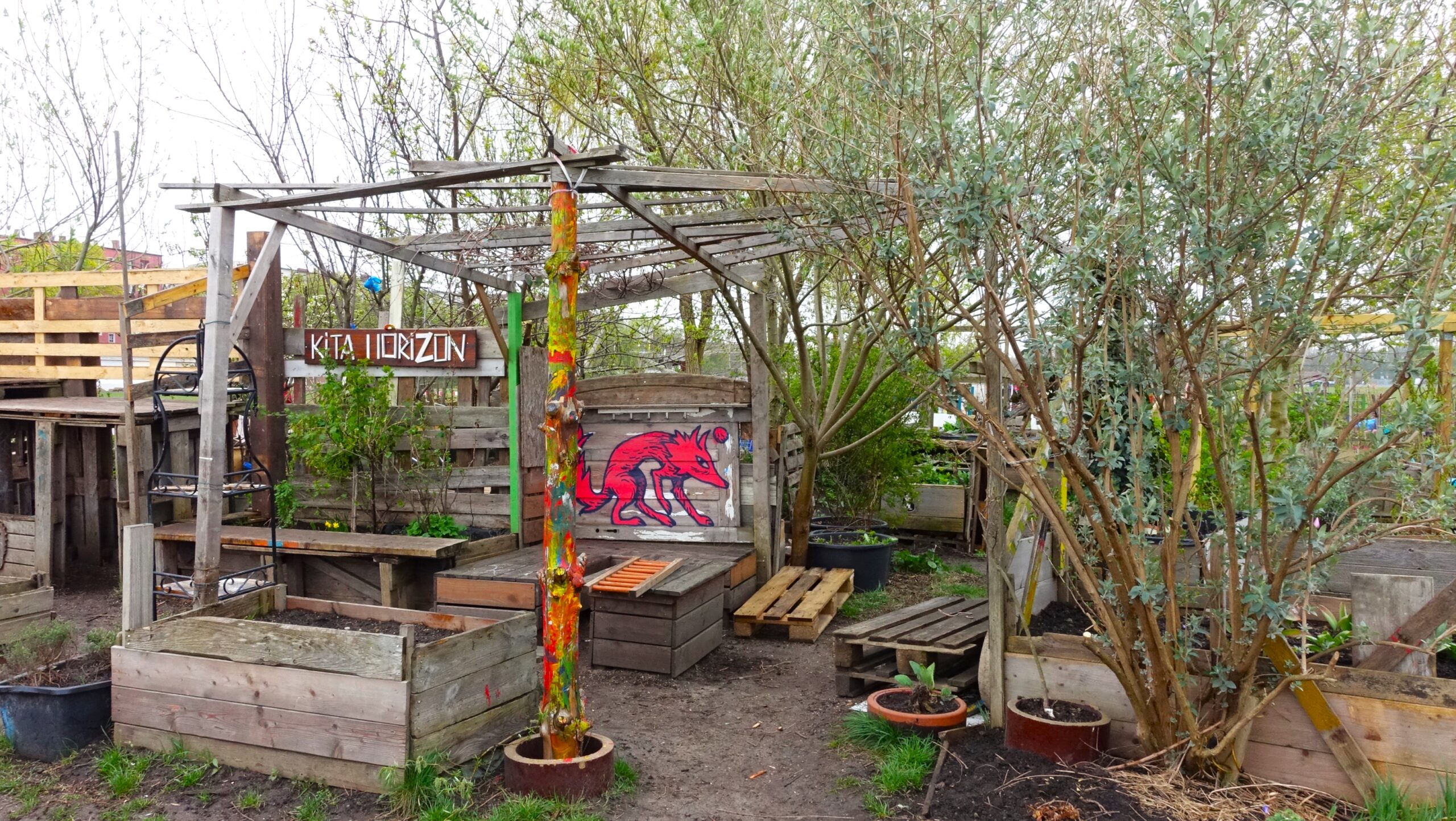
By 8 pm it’s already dark but that doesn’t scare away people. Instead, techno beats start roaring over the field and a disco light is turned on. Against the sunset silhouettes of dancing people make it look like a proper rave. I look around, this really is a park for all ages. Families, friends, dog owners, hobbyists, and party people.
Suddenly a man with a big light appears.
“The park is closing soon.” he tells me and continues to walk over to another group of people to repeat the statement.
At 8:30 pm the field closes. It is to protect the field and make it safe for Berliners. Slowly people start walking to the entrance. The evening is over.
